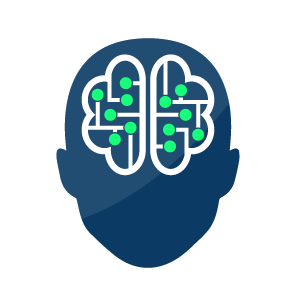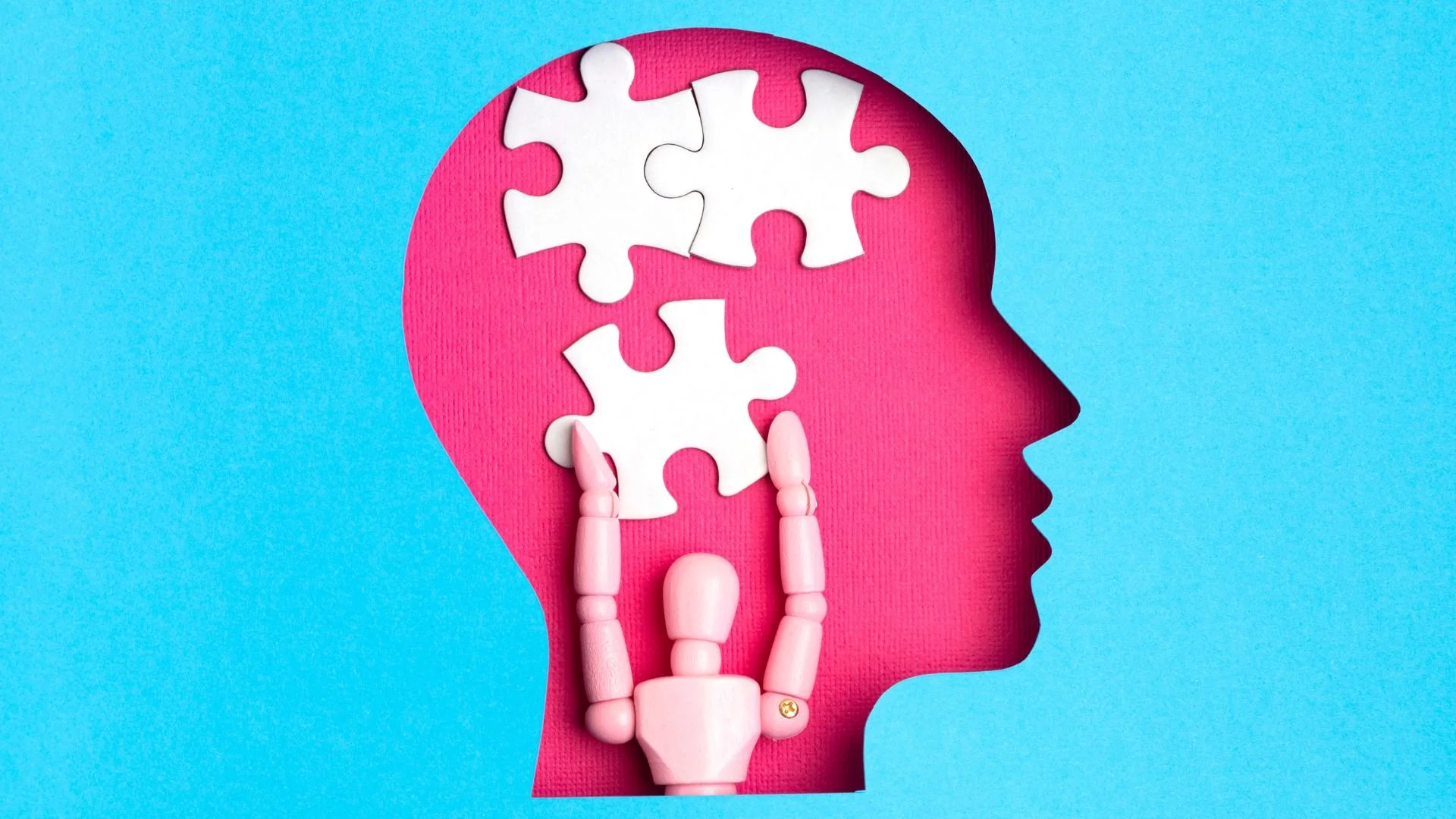Reawakening the Mind | How VR Brings Light to Dementia
Written by: Brianna Hodge
If you’ve ever sat across from someone you love and watched them reach for a word that used to come easily, you know dementia isn’t only about memory, it’s about identity, dignity, and the soft rhythms of everyday life. A diagnosis can feel like a door slowly closing. But what if, even as that door narrows, there are ways to keep the lights on longer, ways to help attention hold, conversation flow, and daily moments feel more like living and less like losing?
That’s where cognitive training enters, not as a cure, but as a craft. Like physical therapy for the brain, it works through guided practice, repetition, and small wins that stack over time. And in recent years, something unexpected has made that practice more engaging: virtual reality (VR). Instead of worksheets and flashcards, we can place someone into a comforting garden, a familiar street, or a calm shoreline, and ask the brain to navigate, remember, sequence, and decide in an environment that feels like life.
This isn’t wishful thinking. The research keeps pointing in a hopeful direction: VR-based cognitive training can support thinking skills, mood, and even behavior in people living with dementia. Let’s walk through what the latest evidence shows, how it translates into real routines, and where platforms like the Smart Therapy Complete Solution fit in.
Rowan-Cabarrus Community College
What Cognitive Training Really Means
Cognitive training is simple in concept: you practice the mental skills you want to protect, such as; attention, working memory, problem-solving, and planning. Then you make that practice consistent and just challenging enough. For dementia, that can mean targeted tasks like remembering a list, planning a route, or reacting to a cue. But here’s the twist: the brain responds best when those tasks matter. Context and meaning light up the neural networks we’re trying to nourish.
That’s why VR makes sense. A headset can turn an exercise into an experience: following a path through a virtual neighborhood, placing items in a kitchen, or choosing the right set of ingredients for dinner. Those experiences are naturally multi-domain, they include; vision, movement, attention, memory, and they’re inherently motivating. People aren’t “doing drills”; they’re doing things.
Across reviews and trials, this difference shows up in outcomes. A recent systematic review focused on older adults with Alzheimer’s disease found that VR interventions were associated with improvements in cognitive and physical function, with quality-of-life benefits emerging in some studies as well. The authors are careful (as good scientists are), noting variability across trials, but the signal is there: when cognitive work happens inside meaningful activity, good things follow. (Appel et al.)
So if you’re a caregiver or clinician, the first takeaway is less technical and more human: make it feel like life. The brain pays attention to what feels real.
Calm Minds Learn Better: What Happens to Mood and Behavior in VR
Anyone who has supported a loved one with dementia knows that cognition and mood are tied together. Agitation, aggression, apathy, these aren’t just symptoms; they shape the whole day. That’s why the findings from a rigorous randomized controlled trial in acute care stand out: even short VR sessions (averaging under seven minutes) were associated with significant reductions in aggressive behaviors among inpatients with dementia. The intervention was acceptable and even enjoyable for participants; while global quality-of-life scores didn’t shift much in the short window studied, the behavioral benefit itself is clinically meaningful, fewer escalations, calmer days, safer care. (Appel,lora, et al)
Zooming out to wellbeing more broadly, a scoping review of VR for people with dementia highlights a helpful pattern: across many programs, VR tends to have positive, or at least neutral, effects on emotional and social wellbeing. In other words, it usually doesn’t make things worse, and often makes them better; participants smile more, engage more, and seem more at ease after sessions. This matters. When people feel calmer and more connected, they can focus, and a focused mind is a learning mind. (Appel et al.)
Put simply: a settled nervous system is fertile ground for cognitive gains. VR can help create that ground.
Working Memory, and Attention
Not every study has to be in dementia to teach us something useful. A 2024 paper in Journal of Affective Disorders looked at VR-based working memory training for people with major depressive disorder (both acute and remitted). After 20 sessions, participants showed significant improvements in working memory, processing speed, visual learning, reasoning/problem-solving, and overall cognition (all p < .05). Improvements in depressive symptoms partially mediated the cognitive gains, suggesting that when mood lifts, cognition lifts with it. (Yan et al.)
Why include this here? Because dementia care is rarely “pure.” Depression, anxiety, and apathy often ride along. If VR-based training can move the needle on attention and working memory in the presence of mood symptoms, that’s encouraging for mixed clinical pictures, exactly what many families and clinicians face.
Safety, Security, and Feeling Seen: Designing VR That People Actually Want to Use
You can have the best therapy in the world, but if it feels invasive or confusing, or if caregivers worry about privacy, it will gather dust. That’s why an open-access paper in Scientific Reports is interesting: the team built “A smart secure virtual reality immersive application for Alzheimer’s and dementia patients” that blends VR, voice recognition, and AI-driven companionship, all under encrypted, access-controlled data handling. In early use, participants and families reported heightened interest, better quality of life, less isolation, and improved cognitive engagement, not just because the content was stimulating, but because the whole experience felt safe, personalized, and human.(Al-Rajab et al.)
That combination, emotionally supportive and technically secure, isn’t a “nice to have.” It’s the difference between a tool people tolerate and a tool they love.
From Headset to Daily Life: How Gains Translate Beyond the Session
The most important question you might be holding is, “Does any of this help outside the headset?” The short answer is yes, often.
In the Alzheimer’s-focused review, many studies connected VR practice to real-world function, better attention in conversation, steadier movement, more active engagement in routines. Not every trial reports big quality-of-life changes (especially in short time frames), but the functional threads are there: safer walking, more social initiation, less agitation, clearer focus, all of which make daily life feel more like living than managing. (Al-Rajab et al.)
As a caregiver or clinician, that’s what your goal is for your patients. You want them to have the skills to show up at the dinner table, on a walk, during an afternoon phone call. The studies suggest that immersive, meaningful practice makes this more likely.
The First 6 Weeks: A Gentle Roadmap
If you’re considering VR-based cognitive training in your clinic, here’s a starter roadmap inspired by the research and real-world clinic patterns:
Begin short, build trust. The acute-care trial showed benefits with very brief sessions. Try 5–10 minutes at first, especially if someone is easily fatigued or wary of new tech. (Appe, Lora,l et al.)
Aim for consistency over intensity. Work toward 20–30 minutes, 2–3 times per week as tolerated. Frequency matters more than an occasional “marathon.”
Keep it meaningful. Choose environments and tasks that feel familiar, cooking, sorting, navigating known places. That “this feels like me” moment fuels engagement. (Appel et al.)
Mix domains. Blend memory with attention, planning with movement. The brain loves a good duet.
Watch mood and behavior. If agitation drops after sessions, lean into whatever content creates calm. Behavioral ease isn’t a side benefit, it’s a platform for learning. (Appe, Lora,l et al.)
Track small wins. Look for changes you can feel, less pacing, more conversation, a bit more confidence in standing up or walking across the room. Those are the signs you’re on the right track.(Appe, et al.)
Where Neuro Rehab VR Fits: Turning “Possible” Into “Practice”
At Neuro Rehab VR, the philosophy is simple: make therapy feel like life, and make progress measurable. The Smart Therapy™ Complete Solution blends immersive activities (think: planning a meal, navigating a small market, organizing a room) with AI-assisted automation so clinicians can personalize quickly, run efficient sessions, and capture objective data without drowning in notes.
Engagement that lasts: When sessions are immersive and meaningful, people want to come back, critical for building the “practice effect” that improves cognition.
Behavioral breathing room: For programs supporting dementia in acute or post-acute settings, short, calming exposures can reduce aggressive behaviors, making the day safer for patients and staff.
Security and trust: HIPAA compliance, FDA-registered activities, and privacy-first design matter as much as therapeutic content.
Less paperwork, more care: With AI note automation, clinicians get structured documentation that reflects objective performance data, allowing more time for coaching, connection, and creativity. The things humans do best.
Neuro Rehab VR doesn’t try to replace traditional therapy; it amplifies it. When you blend hands-on skill-building with immersive practice, you get the best of both worlds: human wisdom and digital stamina.
The Heart of It
Dementia changes the story, but it doesn’t erase the author. People still want to feel competent, connected, and calm. Cognitive training, especially when it feels like life, gives them another way to keep writing.
VR isn’t a magic wand. It’s a stage. On that stage, the brain gets to rehearse the skills that make daily life possible: noticing, remembering, deciding, initiating. The research suggests that when the performance ends, some of those lines stick, less agitation, steadier attention, small gains in function, and sometimes, a smile that wasn’t there yesterday.
If you’re ready to try, start small, stay steady, and choose content that feels like them. That’s where the light gets in.
-
Al-Rajab, Murad, et al. “A Smart Secure Virtual Reality Immersive Application for Alzheimer’s and Dementia Patients.” Scientific Reports, vol. 15, no. 1, 20 Aug. 2025, www.nature.com/articles/s41598-025-14624-6, https://doi.org/10.1038/s41598-025-14624-6.
Appel, Lora, et al. “Evaluating the Impact of Virtual Reality on Behavioural and Psychological Symptoms and Quality of Life of Acute Care Inpatients with Dementia: A Randomized Controlled Trial (VRCT) (Preprint).” Journal of Medical Internet Research, vol. 26, 11 Aug. 2023, https://doi.org/10.2196/51758.
Appel, et al. “Virtual Reality to Promote Wellbeing in Persons with Dementia: A Scoping Review.” Journal of Rehabilitation and Assistive Technologies Engineering, vol. 8, no. 8, Jan. 2021, p. 205566832110539, https://doi.org/10.1177/20556683211053952.
Yan, Suxia, et al. “Virtual Reality Working Memory Training Improves Cognitive Performance of Acute and Remitted Patients with Major Depressive Disorder.” Journal of Affective Disorders, vol. 344, 1 Jan. 2024, pp. 267–276, https://doi.org/10.1016/j.jad.2023.10.067. Accessed 21 Nov. 2023.





